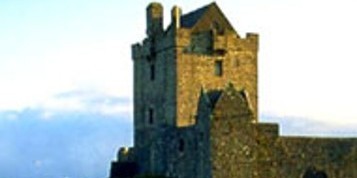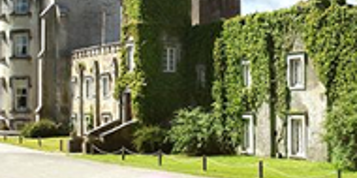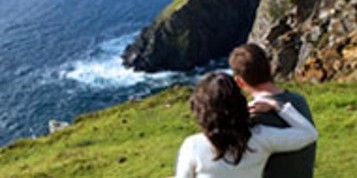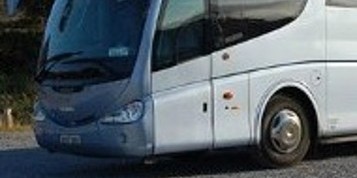ALL IRELAND
All Ireland 14 Nights
This tour can be accessed via any of the Irish Airports and visits counties throughout the country including Northern Ireland.
15% Off ALL rail and self-drive vacations! Book by April 30th!
Book ANY self-drive or rail vacation by April 30th and enjoy 15% off! Don't miss out - explore more for less!
*CIE tours and Knitting tours not included.
-V3.png)
This tour can be accessed via any of the Irish Airports and visits counties throughout the country including Northern Ireland.
While this tour does, of course, entail its fair share of driving it is a small price to pay for the wonderful array of memories that any traveler that partakes in it will return home with. The tour features unfathomable locations filled with diverse scenery. On their travel’s visitors will experience the many cultural differences between the counties that make our small green island unique. While guests will have to keep their ears wide open to continually grasp the range of dialects and accents they will encounter between County Cork on the southern tip of Ireland and the northern counties of Donegal and Antrim, the one unchanging constant will be the level of humor, friendliness & welcoming attitudes that you will undoubtedly receive throughout your journey. While the itinerary we have set out does its best to allow you to see as much of the culture and history as possibly it’s up to you and also highly recommendable that you make sure to take a timeout every now and then to get to know the local people and learn about their lives, join in the culture as well as witness it. Some notable attractions that are popular include the Guinness Storehouse and Trinity College in Dublin, Waterford Crystal Factory in the South and East Powerscourt Gardens in Wicklow, as well as the Rock of Cashel and Cahir Castle.
While in the Cork and Kerry regions, as well as visits to the Cobh Heritage Center and Blarney Castle, you have the option to tour the Ring of Kerry & Dingle Peninsula. To the west, there is the spectacular Cliffs of Moher (With views sure to leave you speechless!), Galway City and the Aran Islands. From there travel north to the remote counties of Donegal & Sligo, where scenes of rural Ireland show some of the most culturally unique areas in the country. Northern Ireland is then your next port of call where you have the opportunity to walk the walls of Derry and experience first-hand one of the world’s most wonderful natural rock formations: the Giant’s Causeway. Formed by an ancient volcanic eruption the 40,000 basalt columns are a sight to behold. While in this area why not visit Belfast, a cultural city with a turbulent past. Learn all about this fascinating area through the words of one of the many impartial tour guides that operate in the city. Finally, after leaving Belfast it’s time to travel south to the Capital with a stop on route at the Ancient Megalithic Tombs of Newgrange, Ireland’s most visited attraction. Despite being built 5,200 years ago (that’s 1,400 years older than the pyramids of Egypt!) the tomb is one of the best-preserved of its kind in the world, and definitely worth a visit.
Overnights for this tour:
- County Wicklow for 1 Night
- Waterford for 1 Night
- County Kerry for 2 Nights
- County Clare for 1 Night
- County Galway for 2 Nights
- County Donegal for 2 Nights
- Antrim Coast for 1 Night
- Belfast for 2 Nights
- Dublin for the last 2 Nights
Included in your price:
- Free calls to your personal Ireland vacation specialist
- 14 nights accommodation on a B&B basis
- Road map of Ireland
- Discounted admission to attractions throughout Ireland
Car Rental:
Rental of a economy-size car. Included with your car is all compulsory insurances - Collision Damage Waiver insurance (CDW with an excess/deductible), theft protection insurance, location fee of €30, Road fund tax, sales tax at 13.5%, unlimited free mileage, third party liability insurance, 24 hour peace of mind breakdown cover.
Occupancy:
Prices are per person based on 2 persons in each room with full Irish breakfast and taxes included. A single supplement will apply to rooms and car rental in the case of single occupancy.
Currency:
Please note that we charge in Euros (€). Prices in other currencies are for indication only and subject to fluctuation.
Day 1: Dublin to Wicklow
Upon collection of your rental car, you will be traveling south through County Wicklow, also known as the ‘Garden of Ireland’. First stop will be Powerscourt House & Gardens. Surrounding this 18th Century Palladian House in the foothills of the Wicklow Mountains, you will find a sublime blend of formal gardens, sweeping terraces, statuary, and ornamental lakes together with secret hollows, rambling walks and over 200 varieties of trees and shrubs. Shortly after this, you will arrive at the ancient monastic settlement at Glendalough. Glendalough “the glen of the two lakes” is a truly spellbinding place - an ancient monastic settlement and two clear water lakes beneath the sheer cliffs of a deep valley, which was carved out by glaciers during the Ice Age. The monastic settlement has been a center for pilgrims and visitors since its foundation by St. Kevin in the 6th century. From here, follow the signs for Avondale House. Built in 1779 Avondale House is set in the spectacular surroundings of Avondale Forest Park, now a museum to the memory of one of the greatest political leaders of modern Irish history, Charles Stewart Parnell, who was born in Avondale on 27th June 1846. Continue on to Avoca where you will find the Avoca Handweavers factory, famed worldwide for the quality of its woven fabrics. As well as visiting its shop, you will be able to take a tour of the factory in this most picturesque of villages. The village was also the setting for the top television series “Ballykissangel”
Day 2: Wicklow to Waterford
What a day in the store! Travel down to Waterford today. En-route you will have a number of sightseeing opportunities. Continue to Wexford where you can visit the Irish National Heritage Park. The Park, which is one of the country’s top attractions, features replications of Irish homesteads, burial and worship sites, and takes the visitor on tour through 9,000 years of Irish history. Further down towards Waterford visit The Kennedy Homestead. The Kennedy Homestead, the birthplace of President John F. Kennedy’s great-grandfather Patrick Kennedy, celebrates the story of five generations of the Kennedy dynasty and is still farmed today by his descendants. Joining the multitudes of Irish fleeing the Great Famine, Patrick Kennedy departed from this homestead for the port of New Ross on a wet day in 1848 to set sail for the United States where his descendants were to become one of the world’s most famous families.
On to the Dunbrody Famine Ship in New Ross. The Visitor Experience provides a unique, authentic re-creation from a period in history which shaped modern-day America and Ireland. Visitors climb the gangplank to the main deck of the Dunbrody and descend a companionway to enter the quarters of the captain and mate and the stateroom assigned to important passengers. These quarters are fitted out exactly as they were for a voyage. From here to Waterford where you can tour the Waterford Crystal Facility
Day 3: Waterford to Killarney
The following route includes visits to Middleton, Youghal & Cobh. Youghal is famous for its point lace (point d'Irlande) which is distinguished by its vivid patterns as well as the fact that the film ‘Moby Dick’ starring Gregory Peck was filmed here in 1956. After Youghal, you will travel to the village of Cobh. Cobh, situated on one of the world’s largest natural harbors, was the last port of call for the ill-fated Titanic in 1912 and was the closest port to the site of the sinking of the Lusitania in 1915. The heritage center sympathetically recounts these events and tells the story of emigration from Ireland to the United States and Australia from the time of the famine in 1847 up to the 1950s. A stop to climb to the Blarney Castle ramparts to ‘Kiss the Blarney Stone’, said to bestow the gift of eloquence, and is a must for those who dare. Across the village green, you will find the Blarney Woollen Mills store, a one-stop-shop for Irish knitwear, crystal, linen and much more. The alternative route to Blarney takes you via the Rock of Cashel and Cahir Castle 2 of Ireland’s most historic attractions. Cahir Castle, once an important stronghold of the powerful Butler family, which retains its impressive keep, tower and much of its original defensive structure. It is one of Ireland’s largest and best-preserved castles. 10 miles further on and you arrive at the Rock of Cashel. Cashel was once the seat of the Kings of Munster and capital of this southern province. Kings of Ireland, as well as Munster, came to this spot and St. Patrick is known to have preached on the rock and converted the local King, Aenghus, here in the 5th Century. On to Killarney with its three famous lakes and majestic mountain ranges. Killarney has been the inspiration of poets and painters over many centuries & the Killarney National Park is internationally renowned both for its scenic beauty and scientific interest. Other major visitor attractions in Killarney include the 19th-century Muckross House & Gardens & their Traditional Farms, the Torc Waterfall & Ross Castle overlooking the Lakes of Killarney and of course the Gap of Dunloe
Day 4: While in Killarney
There are numerous day trips to be had while based in Killarney. The two most scenic drives in the area include the Ring of Kerry and Dingle Peninsula Driving routes, two of Ireland’s most picturesque drives.
The Ring of Kerry includes visits to colorful villages, ancient heritage sites dotted around the peninsula including Skellig Michael just off the Kerry coast and Staigue Fort. The Dingle Peninsula has more interesting antiquities, historic sites, and varied mountain scenery than any other part of Ireland. The main town Dingle is the most westerly in Europe and attracts large numbers of visitors each year, many of whom come to learn the Irish language in the surrounding Irish speaking district. Also in the area are An Dún Beag Promontory Fort from 800 BC as well as the Blasket Islands and Gallarus Oratory. Gallarus Oratory was built between the seventh and eighth century and is the best-preserved early Christian church in Ireland. On to Brandon Creek from where legend has it that St. Brendan discovered the North American continent in the 6th century. Alternative routes include day trips to Blarney Castle and the Titanic Train in Cork or the northern route to the Cliffs of Moher and the Burren region of County Clare including Bunratty Castle. If you wish to stay closer to Killarney, take a wonderful walk or pony and trap through the Gap of Dunloe, returning to Killarney by boat across the Lakes of Killarney
Day 5: Killarney to Doolin
One of the most dramatic days of your tour brings you from Killarney to the west coast of County Clare. First stop will be the Village of Adare in County Limerick. Adare is regarded by many a seasoned traveler as Ireland’s prettiest village with its charming thatched cottages, manicured public park, and ancient church. From Adare continue towards Limerick City of ‘Angela’s Ashes’ fame and home to King Johns Castle. Shortly after this, you arrive at Bunratty Castle. Built in 1425, this majestic castle was restored in 1954 to its former medieval splendor. Within the grounds of the Castle is Bunratty Folk Park where 19th-century Irish life is vividly recreated. Continuing on to the magnificent ‘Cliffs of Moher’. The majestic Cliffs of Moher are without doubt one of Ireland’s most spectacular sights and overlook the Atlantic Ocean on the coast of West Clare. You then arrive at the village of Doolin. Doolin is world-famous for its wealth of Irish folk music and in recent years has been attracting crowds to spontaneous sessions in any one of its excellent pubs. Just north of the Cliffs you then have the lunar-like Burren region and the ancient Poulnabrone Dolmen Tombs
Day 6: Doolin to Galway
Today you travel to the university city of Galway via the lunar-like Burren Region and the ancient Poulnabrone Dolmen Tombs. Also on the route, you will have a chance to visit Dunguaire Castle on Galway Bay which was built in 1520 by the O'Hynes clan on the picturesque shores of Galway Bay. Galway, the ‘City of the Tribes’ is also known as Ireland’s Cultural and festival capital. With its street entertainers and traditional pubs with great music, Galway and in particular, the Quays area of the city center will captivate you, particularly in the evening time. Other sites in Galway include Ireland’s largest medieval parish church, the Collegiate Church of St Nicholas of Myra dating back to 1320. Christopher Columbus reputedly worshipped in this church in 1477. Also nearby are Galway Cathedral, the Spanish Arch and Eyre Square
Day 7: While in Galway
The hauntingly beautiful Connemara Region awaits you. Just west of Galway, situated on the most western seaboard of Europe, this unspoiled region boasts breathtaking scenery. The characteristic features of Connemara include its rugged, unpolluted coastline, dramatic mountains, numerous lakes and rivers and woodlands, and the renowned Connemara National Park. Visit Kylemore Abbey and the Lough Inagh Valley as well as the spectacular Sky Road near the town of Clifden. You can also visit the fishing village of Roundstone and see how a ‘Bodhran’ (traditional Irish Drum) is made. Alternatively, you may prefer to take the ferry to the Aran Islands. Aran will take you back to an Ireland of Celts and Early Christians. Take a pony and trap, or a guided tour from the pier up the island to the stone fort of Dun Aengus. Dún Aengus is located on top of a 300 ft high sea cliff and is one of the finest prehistoric monuments in Western Europe. This evening, back to the Quays area of the city for some of the best traditional entertainment in the country
Day 8: Galway to Donegal
The most direct route to Donegal will have a driving time of less than 4 hours. On route to Donegal, you will travel by Ireland’s most visited pilgrimage location, the Shrine at Knock. Shortly after this, you can take a slight detour to the Coleman Irish Music Center is a celebration of Irish Music, Culture and Heritage as expressed in the South Sligo style of music played by Michael Coleman and other musicians of his time. Southwest of Sligo Town you will find the Ancient Tombs of Carrowmore. Over 60 tombs have been located by archaeologists to date. Dating back to nearly 5,000 B.C. and centuries older than the Pyramids of Egypt, Carrowmore is Ireland’s largest megalithic cemetery and is considered to be one of the most important in Europe. Shortly after leaving Sligo on route to County Donegal you will arrive at Drumcliff Churchyard, perhaps the most visited graveyard in Ireland. William Butler Yeats is buried here under the epitaph that he penned, “Cast a Cold Eye on Life, on Death. Horsemen pass by!”. The Churchyard stands in the shadow of the magnificent Benbulben. Continue north until you reach Belleek home to Belleek Pottery, where there is an excellent visitor center that is open from April to October. Set up in 1857, the factory is famous worldwide for its ornate fine Parian China. Other major touring attractions in Donegal include the Railway Heritage Center, Donegal castle and Donegal Craft Village in Donegal Town. Heading west from Donegal Town, on the edge of the Atlantic is Ireland’s premier fishing port of Killybegs. Nearby are the magnificent Slieve League Cliffs which at over 1,000 ft (300 meters) the cliffs are the highest marine cliffs in Europe. Next stop along this route is the Gaelic speaking village of Glencolumbcille where you can take the opportunity to relive local rural life as experienced in 18th, 19th and 20th century Ireland
Day 9: While in Donegal
There are a number of other options available to you today including the ancient territory of the Inishowen Peninsula is the most northerly part of Ireland. Monuments of an earlier age seem to grow from the landscape as castles, towers and ancient churches shimmer in the sunshine. Your tour begins at Grianan an Aileach, the ancient Temple of the Sun that was Christianized by St. Patrick. Founded by the Druids, this ring fort dates back to some 2,000 years B.C. The panoramic view from the walls of this ancient palace is truly magnificent; seven counties can be seen on a clear day. Onwards north to Buncrana and the Tullyarvan Mill - a tastefully restored corn mill dating from the 19th-century, today developed as a local craft center and tourist amenity.
From Buncrana to Dunree Head and Fort Dunree, constructed in 1798 by the English as a defensive measure against Napoleonic invasion. At the top of the Inishowen Peninsula is Ireland’s most northerly point, Malin Head. It is not just Ireland’s most northerly point, but also an area of great scenic beauty and of historical, scientific and ecological importance. The area is steeped in history and folklore. Continuing around the peninsula, you arrive at the pretty village of Culduff with its stone circle. Deep in the heart of County Donegal is Glenveagh National Park and is considered by many to be Ireland's finest national park. At the core of the park is the Glenveagh Estate, originally the home of the notorious landlord John George Adair, much despised for his eviction of Irish tenant farmers in the 1860s
Day 10: Donegal to the North Antrim Coast
You will find touring around the city of Derry to be a multi-layered experience that takes in all periods of its tumultuous history and vibrant present. The fortified walls of the city are among the best-preserved city fortifications in the Western World. They rise to a height of 26 ft (8m) and in places are 30 ft (9m) wide. Completed in 1618 to defend the Plantation City, the walls have never been breached in three major sieges - even during the 105-day siege of 1689 when 7,000 of the 30,000 population died of starvation.
Beyond Derry, the major attractions in Antrim include The Giants Causeway, Bushmill’s Distillery, Dunluce Castle and the Carrick-a-rede rope bridge. Many of these sites are located close to each other which means minimal between each location. The fact that the Causeway was formed 70,000,000 years ago by massive volcanic activity is contradicted only by a local legend that claims the causeway was created by a fabled giant. The Old Bushmills Distillery is the world's oldest licensed Whiskey Distillery. King James I granted the original license to distill 'Acqua Vitae' in April 1608, and since then Bushmills has been making the finest Irish Malt Whiskey for almost four hundred years. Dunluce Castle was shaped when the sea cut deep into the land, exploiting cracks in either side of the rock. The early Christians and the Vikings were drawn to this romantic place and an early Irish fort once stood here. Further along the coast near the harbor of Ballintoy the stunning Carrick-a-Rede Rope Bridge spans a gaping chasm between the coast and a small island used by fishermen. The terrifying eighty-foot drop can be crossed via the swinging bridge - not for the faint-hearted
Day 11: North Antrim Coast to Belfast
From North Antrim, you will be heading down towards the picturesque coastal villages of Cushendun, Cushendall, and Glenarm in the stunning Glens of Antrim. Many monuments can be found in this area from the Stone Age and early Christian period. From Glenarm, it's time to travel to Belfast. Unless you approach Belfast from the sea you cannot help but come upon the city suddenly because of its fine setting: a 'Hibernian Rio' as one writer has called it. A village in the 17th century, this robust northern metropolis now has a population of nearly half a million people. The world's largest dry dock is here and the shipyard's giant cranes tower over the port. more than 30 years of conflict to become one of the safest and friendliest cities in Europe. Take one of the cities famed Black Cab Tours and let your experienced, impartial and friendly driver acquaint you with the history & culture of Belfast. Tours include The Titanic and Cathedral Quarter and other areas of the city including visiting some of the famous murals that represent both sides of the political divide
Day 12: While in Belfast
Continue your sightseeing of Belfast today taking in visits to those major attractions that you did not have the time for the previous day including the Titanic Quarter where you can take one of the excellent local tours or the Black cab Tours. Other major areas of interest in Belfast include St Anne's Cathedral, City Hall, The Belfast Wheel and of course in the evening, pay a visit to the Crowne Liquor Saloon. It's amazing how many visitors from abroad don't realize that the Titanic was actually built in Belfast! Because she bore the name of the port of Liverpool on her stern people assume that this was where she was built. In fact, Liverpool was simply the home port of the White Star Line fleet of which Titanic was the ultimate flagship. Titanic was conceived, designed, built and launched in Belfast and... as the locals fondly say "She was alright when she left here!!!
Day 13: Belfast to Dublin
Time to travel south to Dublin. However, if you wish to prolong the return to big city life, a slight detour by way of Ireland's most visited attraction, the megalithic tombs in Newgrange. One of the great wonders of the ancient world, Newgrange is older than Stonehenge, Mycenae or even the Pyramids of Egypt. Also in this historic county of Meath, you will find the seat of the ancient kings of Ireland at the Hill of Tara as well as the splendid Trim Castle, just north of Dublin. The quandary that you will be faced with when you reach Dublin is, not what you should see but that you should leave out. Knee-deep in history and with its own unique sense of humor and wit, Dublin is an invigorating city. Take the opportunity to visit some of Ireland’s most history-laden locations, including Trinity College and the Book of Kells, Dublin Castle, Kilmainham Gaol, The National History Museum and not forgetting The Guinness Brewery, St. Patrick’s Cathedral & why not finish up the day in Dublin’s Temple Bar section and enjoy the wonderful pubs and music it is famous for
Day 14: While in Dublin
Continue your sightseeing in Dublin today visiting the many historical and modern attractions that this cosmopolitan city has to offer. Other attractions include Christchurch Cathedral which was founded in the year 1030 by Sitric, King of the Dublin Norsemen, the James Joyce Center & the Dublin Writers Museum. Of course, you may wish to take time out to shop in Grafton Street or any one of a number of narrow and quaint streets that the café strewn city center has to offer. The Dublin Hop On Hop Off Bus is an excellent way of visiting many of Dublin’s most historic locations. This evening why not spend some time in the Temple Bar area. This small area boasts a dazzling choice of restaurants, cafes, bars, and shops to suit all tastes and pockets, all within easy walking distance of Temple Bar's many cultural centers and galleries. Its narrow cobbled streets are pedestrianized and are ideally suited to a leisurely stroll through the quarter. There is also the opportunity to experience an evening’s entertainment at any one of a number of excellent traditional Irish shows
Day 15: End of Tour
Check out of your hotel and bid farewell (for now) to Ireland!
15% Off ALL rail and self-drive vacations! Book by April 30th!
Book ANY self-drive or rail vacation by April 30th and enjoy 15% off! Don't miss out - explore more for less!
*CIE tours and Knitting tours not included.
-V3.png)
Accommodation & Car
| B&Bs | 3*Hotels | 4*Hotels | Combination | |
|---|---|---|---|---|
| Jan-Mar & Nov-Dec | €1,730 | €2,170 | €2,990 | €2,250 |
| April & October | €1,750 | €2,350 | €3,190 | €2,390 |
| May-June | €1,970 | €2,750 | €3,790 | €2,740 |
| July & September | €2,190 | €2,970 | €3,990 | €2,970 |
| August | €2,190 | €2,970 | €3,990 | €2,970 |
- Please note prices are per person based on 2 persons in each room with full Irish breakfast and taxes included.
- The Combination package includes 6 Nights in 3*** Hotels, 4 nights in Luxury Manor House Hotels & 4 Nights in our hand-picked B&B's.
- Children Sharing with 2 adults (aged 2-11) pay 40% of the Adult option.
- Children under the age of 2 are free when sharing with 2 Adults.
- Your Accommodation & Car Rental Package rate includes an Economy class car e.g., Opel Corsa or Fiat Punto.
- Included with your car is all compulsory insurances - Collision Damage Waiver insurance (CDW with an excess/deductible), theft protection insurance, location fee of €30, Road fund tax, sales tax at 13.5%, unlimited free mileage, third party liability insurance, 24 hour peace of mind break down cover.
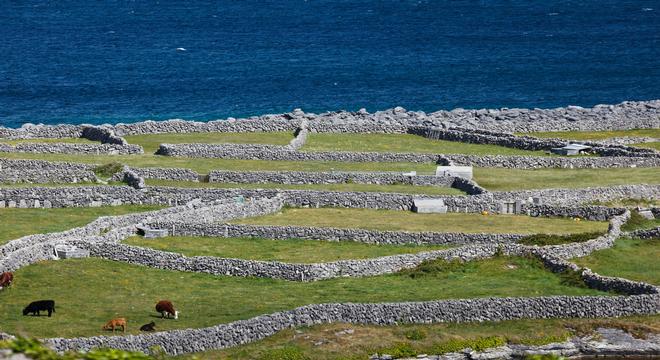
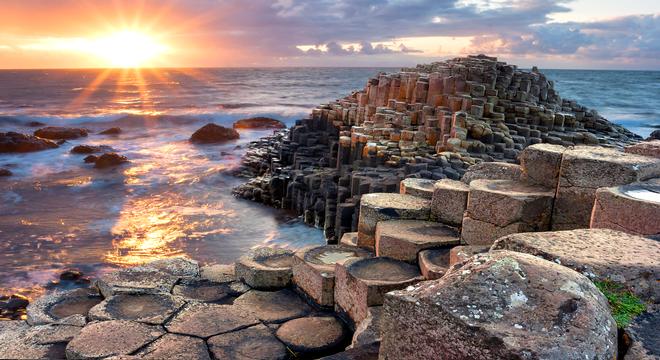
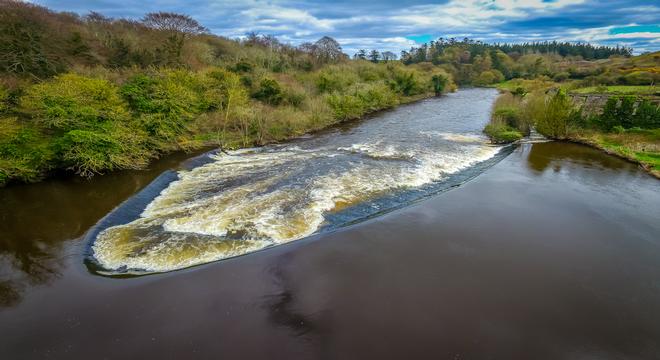
.jpg)
